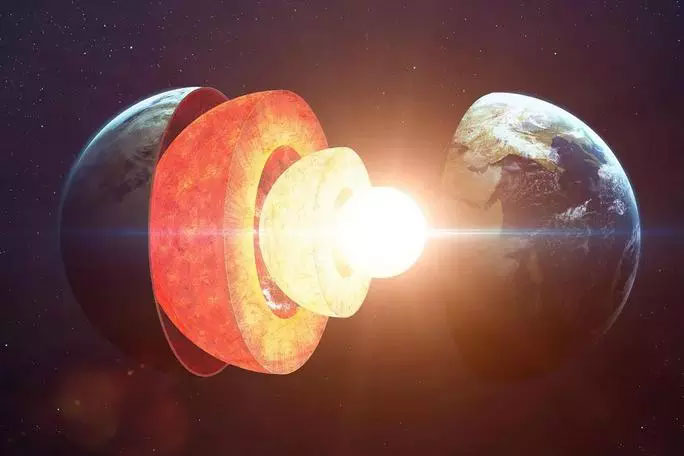Scientists have discovered shocking evidence that the layers of the Earth do not form a tightly connected sphere.
A study recently published in Science Advances reveals that the Earth’s inner core has even “slipped gears,” rotating in a different direction than the rest of the planet for about six years from 1969 to 1971, based on seismic data analysis. By the period of 1971-1974, it continued to shift to another direction.
The length of the day also increased and then contracted during these two phases, unbeknownst to humanity.

The layers of the Earth do not connect and move uniformly as imagined; instead, the core has its own speed and rotation direction – (Illustration from NASA)
The initial evidence was collected accidentally. The research team, led by Earth Sciences Professor John E. Vidale from the School of Letters, Arts, and Sciences at the University of Southern California, utilized data from the Large Aperture Seismic Array (LASA) operated by the U.S. Air Force, located in Montana, to demonstrate that the Earth’s inner core is rotating faster than the rest of the planet, although not as quickly as previous theories suggested.
New beamforming techniques developed by Professor Vidale also helped uncover new evidence about the core’s rotation speed through an old dataset—waves generated from underground nuclear tests conducted by the Soviet Union between 1971 and 1974—and discovered a reversal in rotation direction of at least 1/10 of a degree per year.
According to PHYS, this is the first time the controversial theory of the Earth’s core “slipping” rotation has been empirically validated.
This leads to a six-year cycle in which a day varies from being shorter than 24 hours by about 0.2 seconds to longer than 24 hours by about 0.2 seconds, a phenomenon that is difficult for us to perceive.


















































